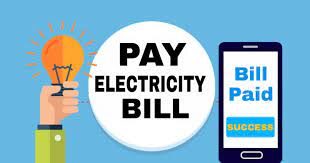
Hey there, as a homeowner, I know that paying the monthly electric bill can be a real pain. It’s a recurring expense that can quickly add up and put a strain on our finances. But fear not, because there are ways to make the process smoother and less stressful. In this article, I’ll walk you through seven common pain points associated with paying your electric bill and offer some tips on how to address them.
High Costs
One of the most significant pain points associated with paying your electric bill is the cost. It’s no secret that electricity rates can be high, and it can be challenging to afford them each month. However, there are several steps you can take to reduce your energy costs, such as investing in energy-efficient appliances and light bulbs, using power strips to reduce phantom energy use, and adjusting your thermostat when you’re away from home.
Fluctuating Rates
Another pain point associated with paying your electric bill is fluctuating rates. If you have a variable-rate plan, it can change from month to month, making it difficult to budget for your electricity expenses. To address this issue, you may want to consider switching to a fixed-rate plan that will provide you with more predictable energy bills.
Overdue Payments
Late or missed payments can also be a pain point for homeowners. Late fees and penalties can add up quickly and lead to higher bills and financial stress. To avoid overdue payments, consider setting up automatic payments or reminders so that you never miss a due date.
Difficulty Understanding Bills
Understanding electric bills can be challenging for some homeowners. Bills can be complex and may include charges that are difficult to decipher, leading to confusion and frustration. To address this issue, take some time to review your bill carefully and look for any charges that you do not understand. You may also want to reach out to your energy provider for more information or clarification.
Energy Waste
Homeowners who are not energy-conscious may experience higher electric bills due to energy waste. Leaving lights on, running appliances unnecessarily, and having poor insulation can all lead to higher bills. To address this issue, consider taking steps to reduce your energy consumption, such as turning off lights when you leave a room, sealing air leaks around windows and doors, and upgrading your insulation.
Inefficient Appliances
Older or inefficient appliances can also be a pain point for homeowners. Appliances that are not energy-efficient can use more electricity and lead to higher bills. To address this issue, consider upgrading to newer, energy-efficient appliances that will help you save money on your energy bills over time.
Power Outages
Power outages can cause inconvenience and discomfort for homeowners. They may also result in additional expenses, such as spoiled food and the cost of temporary living arrangements. To address this issue, consider investing in a generator or portable power source that will help you stay comfortable and safe during power outages.
In conclusion, paying your electric bill doesn’t have to be a source of stress and frustration. By understanding these common pain points associated with paying your electric bill and taking steps to address them, you can reduce your energy costs and make the process smoother and more manageable. So, start taking action today and enjoy the peace of mind that comes with a well-managed electricity bill!

